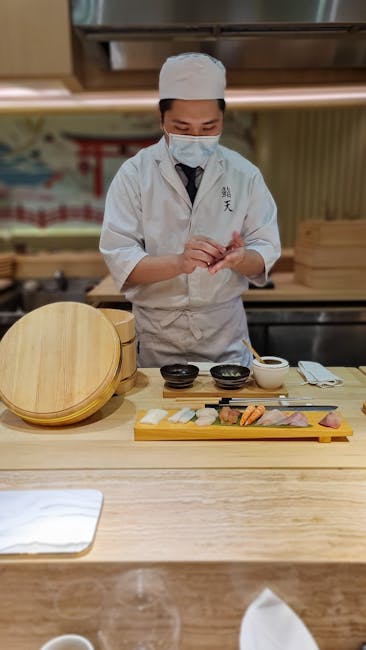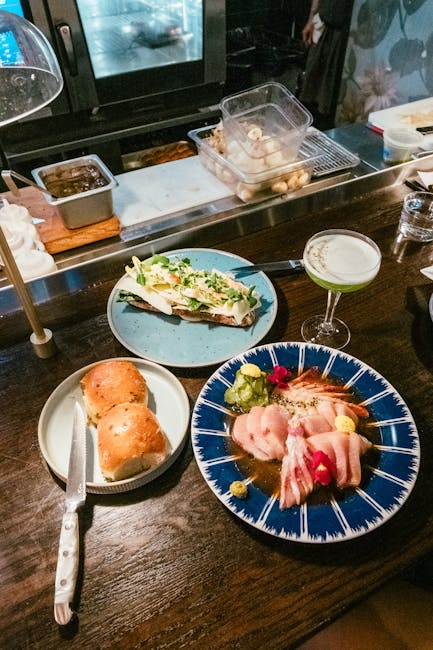Puffer Fish: A Deliciously Dangerous Delight at the Sushi Bar?
The allure of fugu, the Japanese name for puffer fish, is a curious blend of culinary excitement and sheer terror. This seemingly innocuous fish holds a dark secret: its internal organs contain tetrodotoxin, a potent neurotoxin that can be lethal if even the slightest trace makes its way into a prepared dish. This inherent danger, coupled with the exquisite, delicate flavor that skilled chefs coax from its flesh, has cemented fugu’s place as a dish shrouded in both fascination and fear. This article delves deep into the world of puffer fish, exploring its deadly nature, the meticulous preparation required, the legal regulations surrounding its consumption, and the cultural significance that has elevated it to an iconic status in Japanese cuisine.
The Deadly Toxin: Tetrodotoxin
Tetrodotoxin (TTX) is the primary culprit behind the danger associated with consuming puffer fish. This non-protein neurotoxin blocks sodium channels in nerve cells, preventing the transmission of nerve impulses. This disruption can lead to a wide range of symptoms, starting with numbness and tingling in the mouth and extremities, progressing to paralysis, respiratory failure, and ultimately, death. There is no known antidote for TTX poisoning, making its careful preparation absolutely paramount.
The concentration of TTX varies significantly between different species of puffer fish, and even within the same species depending on factors like diet, habitat, and age. This inconsistency makes accurate assessment of toxicity extremely challenging, emphasizing the necessity for expert handling and preparation.
The Art of Fugu Preparation: A Masterclass in Precision
Preparing fugu is not a task for the faint of heart. It requires years of rigorous training under the guidance of experienced chefs. These chefs, known as fugu-takumi, undergo a demanding apprenticeship, learning to identify and meticulously remove the toxic organs – the liver, ovaries, skin, and intestines – with surgical precision. Even a minuscule amount of residual toxin can prove fatal.
The process is incredibly intricate and demands absolute focus. Any lapse in concentration, any slight deviation from established techniques, can have devastating consequences. The fugu-takumi must possess an unparalleled knowledge of fish anatomy, a steady hand, and a deep understanding of the risks involved. The preparation is a delicate dance between culinary artistry and life-or-death precision.
The Steps Involved in Preparing Fugu:
- Careful Selection: Choosing the right fish is the first crucial step. Experienced chefs can identify safe and healthy fish, avoiding specimens that might contain higher levels of toxin.
- Precise Dissection: The fish is carefully dissected, separating the edible parts from the highly toxic organs. This requires exceptional dexterity and knowledge of the fish’s internal structure.
- Thorough Cleaning: Every trace of toxic material must be meticulously removed. This often involves multiple rinses and thorough inspections to ensure no toxins remain.
- Careful Handling: Throughout the entire process, utmost care must be taken to avoid accidental contamination.
- Final Inspection: A final inspection is performed before serving to eliminate any possible risk.
Legal Regulations and Safety Measures
Given the inherent dangers associated with fugu, strict regulations govern its preparation and sale in Japan. Only licensed chefs with years of training are permitted to prepare and serve fugu. These licenses are difficult to obtain and require passing rigorous examinations that test the chef’s knowledge of fish anatomy, toxin identification, and safe preparation techniques.
Restaurants serving fugu must adhere to strict safety guidelines and regulations. These guidelines cover every aspect of the process, from the sourcing of the fish to the final presentation on the plate. They also mandate detailed records to ensure complete traceability and accountability.
Despite the stringent regulations, accidents still occur. Although rare, instances of fugu poisoning highlight the ongoing necessity for careful preparation and strict adherence to safety protocols. The potential lethality of the dish underscores the significance of consuming fugu only in reputable establishments with licensed chefs.

The Cultural Significance of Fugu
Beyond the culinary risks, fugu holds significant cultural importance in Japan. It is often associated with bravery, prestige, and a sense of daring. The willingness to partake in this potentially deadly delicacy is seen as a demonstration of courage and trust in the chef’s expertise. The ritualistic nature of the meal, combined with the exceptional taste, elevates fugu to a status beyond a simple dish.
The preparation and serving of fugu is often a ceremonial occasion. The delicate presentation, the reverence shown for the ingredients, and the meticulous attention to detail all contribute to the overall experience. The high cost of fugu also reinforces its status as a luxury item, enjoyed primarily on special occasions.
Beyond Japan: Global Perspectives on Puffer Fish
While Japan is most closely associated with fugu, puffer fish are found in various parts of the world. Many other cultures have their own traditions and practices regarding the consumption of puffer fish, though the level of risk and the precautions taken can vary significantly.

In some regions, local knowledge and practices dictate safe preparation methods, often passed down through generations. However, in the absence of comprehensive regulations and standardized training, the risk of accidental poisoning is considerably higher. It is crucial to exercise extreme caution and avoid consuming puffer fish from unknown sources unless prepared by individuals with extensive experience in safe handling and preparation.
The Future of Fugu: Balancing Risk and Reward
The future of fugu remains a delicate balance between the allure of its exquisite flavor and the ever-present risk of poisoning. The strict regulations in Japan are essential for minimizing the dangers, but the inherent risks remain. Ongoing research into the toxin, improved preparation techniques, and continued education of chefs are crucial for ensuring the safe consumption of this unique delicacy. The continued popularity of fugu highlights the human fascination with pushing boundaries, but also emphasizes the need for responsible consumption and respect for the inherent dangers involved.
For those seeking a culinary adventure that pushes the boundaries of taste and risk, fugu offers an unparalleled experience. But the thrill must always be tempered with a profound understanding of the risks involved and a commitment to consuming it only from reputable sources prepared by highly skilled and licensed professionals. The deliciousness of fugu should never overshadow the potential lethality of this famously fatal dish.


